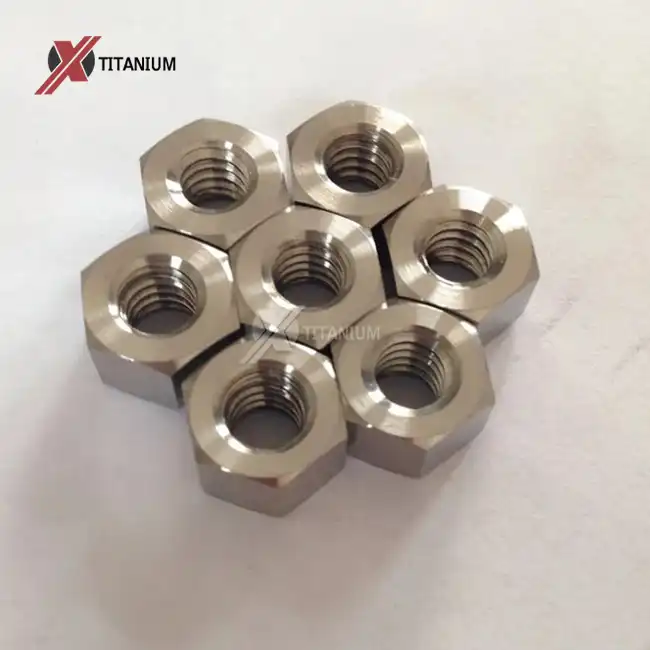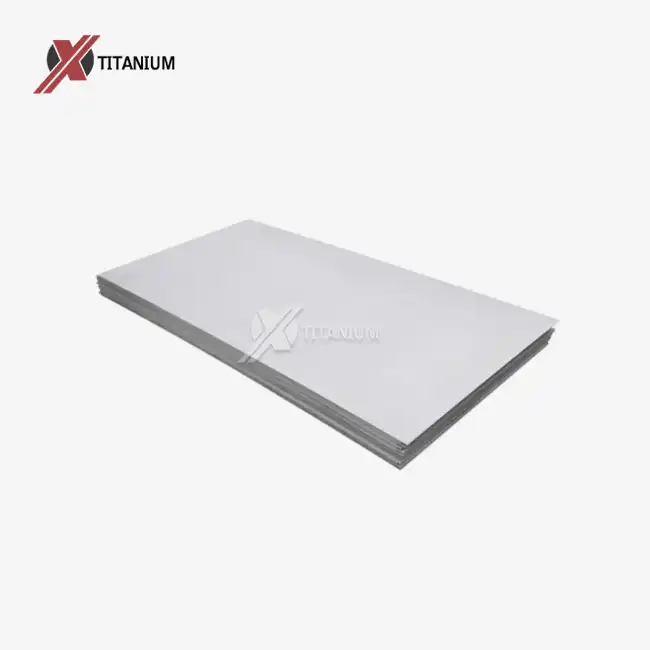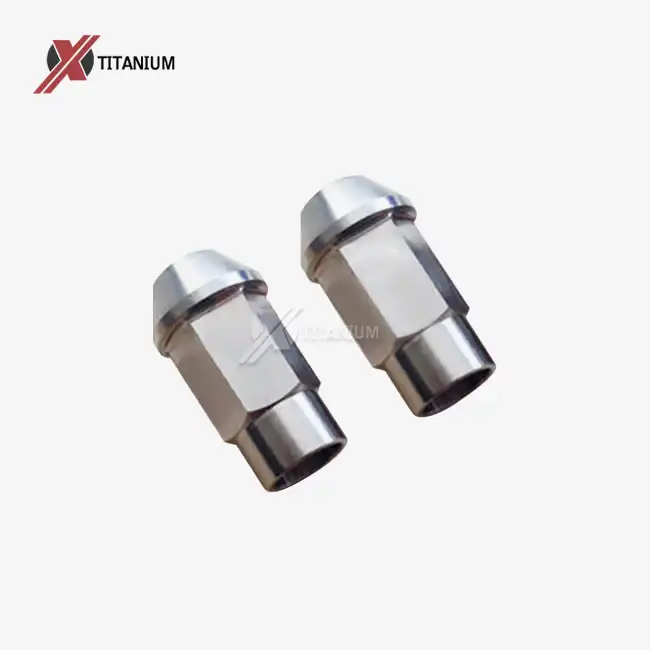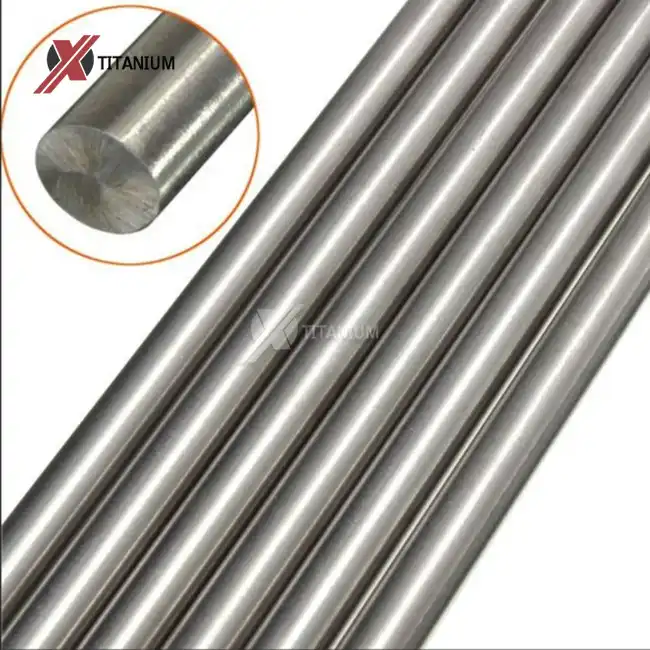The Unique Properties of Titanium in Medical Applications
Biocompatibility: The Cornerstone of Titanium's Success
The biocompatibility of titanium is the primary reason for its widespread use in medical implants, particularly in medical titanium plates. This remarkable property stems from titanium's ability to form a stable oxide layer on its surface when exposed to oxygen. This protective layer prevents corrosion and ion release, significantly reducing the risk of allergic reactions or rejection by the body's immune system.
Moreover, titanium's biocompatibility extends beyond mere tolerance by the body. It actively promotes osseointegration - the direct structural and functional connection between living bone tissue and the surface of the implant. This unique characteristic allows medical titanium plates to bond intimately with the surrounding bone, enhancing stability and accelerating the healing process.
Mechanical Strength: Supporting the Body's Framework
While biocompatibility is crucial, the mechanical properties of titanium are equally important in the context of medical titanium plates. Titanium alloys, such as Ti-6Al-4V (Grade 5), offer an exceptional strength-to-weight ratio. This means that medical titanium plates can provide robust support and fixation while remaining lightweight, minimizing discomfort for patients.
The high tensile strength of titanium - typically around 900 MPa for Grade 5 alloy - ensures that medical titanium plates can withstand the significant stresses placed upon them during normal body movements and activities. This strength, combined with titanium's natural flexibility, allows the plates to distribute forces evenly, reducing the risk of stress shielding and subsequent bone resorption.
Corrosion Resistance: Ensuring Long-Term Reliability
Another critical property of titanium in medical applications is its exceptional resistance to corrosion. The stable oxide layer that forms on the surface of titanium not only contributes to its biocompatibility but also provides a barrier against corrosive elements in the body's internal environment.
This corrosion resistance is particularly important for medical titanium plates, as it ensures the longevity and reliability of the implant. Unlike some other metals, titanium can withstand the harsh biochemical conditions within the human body without degrading or releasing harmful ions. This characteristic contributes to the long-term success of titanium implants, reducing the need for revision surgeries and improving patient outcomes.
Manufacturing Processes and Quality Control for Medical Titanium Plates
Precision Machining: Crafting the Perfect Fit
The production of medical titanium plates begins with precision machining processes. Advanced CNC (Computer Numerical Control) machines are employed to shape raw titanium into plates with exact dimensions and specifications. This level of precision is crucial, as even minor deviations can affect the plate's performance and patient comfort.
The machining process typically involves multiple stages, including cutting, milling, and drilling. Each step is carefully controlled to ensure the final product meets the stringent requirements for medical implants. Surface finishing techniques, such as polishing or texturing, may also be applied to enhance the plate's interaction with biological tissues.
Surface Treatments: Enhancing Performance and Biocompatibility
After machining, medical titanium plates often undergo various surface treatments to further improve their properties. These treatments can include:
- Anodization: This electrochemical process creates a controlled oxide layer on the titanium surface, enhancing corrosion resistance and potentially improving osseointegration.
- Plasma spraying: A technique used to apply a bioactive coating, such as hydroxyapatite, to promote bone growth and implant integration.
- Acid etching: This process creates a micro-roughened surface that can enhance cell adhesion and promote faster healing.
These surface treatments are carefully selected based on the specific application of the medical titanium plate, ensuring optimal performance in diverse surgical scenarios.
Rigorous Quality Control: Ensuring Safety and Efficacy
Given the critical nature of medical titanium plates, quality control is paramount throughout the manufacturing process. Stringent testing protocols are implemented to verify the mechanical properties, dimensional accuracy, and surface characteristics of each plate.
Common quality assurance tests for medical titanium plates include:
- Non-destructive testing: Techniques such as X-ray inspection and ultrasonic testing to detect any internal flaws or inconsistencies.
- Mechanical testing: Including tensile strength, fatigue resistance, and bending tests to ensure the plate meets required performance standards.
- Chemical analysis: To verify the composition and purity of the titanium alloy.
- Surface analysis: Including roughness measurements and biocompatibility testing to ensure proper interaction with biological tissues.
These comprehensive quality control measures help ensure that every medical titanium plate meets the highest standards of safety and efficacy, providing surgeons and patients with confidence in the implant's performance.
Clinical Applications and Future Innovations in Medical Titanium Plates
Orthopedic Surgery: Restoring Mobility and Function
Medical titanium plates have found extensive use in orthopedic surgery, particularly in the treatment of fractures and joint reconstruction. Their ability to provide stable fixation while promoting bone healing makes them ideal for a wide range of applications, including:
- Long bone fractures: Titanium plates can be used to stabilize fractures in the femur, tibia, humerus, and other long bones, allowing for early mobilization and faster recovery.
- Spinal fusion: Titanium plates and cages are commonly used in spinal surgery to provide support and promote fusion between vertebrae.
- Joint reconstruction: In procedures such as total knee or hip replacements, titanium components, including plates, are often used due to their durability and biocompatibility.
The versatility of medical titanium plates in orthopedic applications has significantly improved patient outcomes, reducing recovery times and enhancing long-term functional results.
Craniofacial Surgery: Restoring Form and Function
In the field of craniofacial surgery, medical titanium plates play a crucial role in reconstructive procedures. Their malleability allows surgeons to contour the plates to match the complex curvatures of the skull and facial bones. Applications in this area include:
- Facial fracture repair: Titanium plates can be used to stabilize and reconstruct fractured facial bones, such as the mandible, maxilla, or orbital floor.
- Cranial reconstruction: Following neurosurgery or trauma, titanium plates can be used to repair skull defects, providing protection for the brain and restoring normal contours.
- Orthognathic surgery: Titanium plates are employed in corrective jaw surgery to reposition and stabilize the maxilla and mandible.
The biocompatibility and strength of titanium plates in these applications help ensure successful outcomes in complex craniofacial procedures, improving both form and function for patients.
Future Innovations: Pushing the Boundaries of Medical Titanium Plates
As technology advances, the field of medical titanium plates continues to evolve. Some exciting areas of research and development include:
- 3D-printed titanium plates: Additive manufacturing techniques are being explored to create custom-designed plates that perfectly match a patient's anatomy, potentially improving outcomes and reducing surgery time.
- Smart implants: Researchers are investigating ways to incorporate sensors into titanium plates, allowing for real-time monitoring of healing progress and early detection of complications.
- Bioactive coatings: New surface treatments and coatings are being developed to further enhance osseointegration and reduce the risk of infection.
- Biodegradable titanium alloys: While still in early stages, research into biodegradable titanium-based materials could lead to plates that provide temporary support and then gradually dissolve as the bone heals.
Conclusion
Medical titanium plates have emerged as a cornerstone in modern surgical practice, offering an unparalleled combination of strength, biocompatibility, and versatility. From their unique properties that promote osseointegration to the advanced manufacturing processes that ensure their quality, these implants have revolutionized patient care across various medical disciplines. As we look to the future, ongoing innovations in materials science and manufacturing techniques promise to further enhance the capabilities of medical titanium plates, potentially leading to even more personalized and effective treatments.
If you're in need of high-quality medical titanium plates or other titanium products, look no further than Baoji Chuanglian New Metal Material Co., Ltd. With over a decade of experience in titanium product manufacturing and research, we offer a wide range of solutions tailored to your specific needs. Our medical titanium plates are crafted to the highest standards, ensuring optimal performance and patient safety. To learn more about our products or to discuss your requirements, please don't hesitate to contact us at info@cltifastener.com or djy6580@aliyun.com.
FAQs
What makes titanium ideal for medical plates?
Titanium's biocompatibility, high strength-to-weight ratio, and corrosion resistance make it ideal for medical plates. It promotes osseointegration and reduces the risk of adverse reactions.
How long do medical titanium plates last?
Medical titanium plates are designed for long-term use and can last for many years, often for the patient's lifetime. However, the exact duration depends on various factors, including the specific application and patient health.
Are there any risks associated with medical titanium plates?
While titanium is generally very safe, there are always potential risks with any implant. These may include infection, loosening of the plate, or rarely, an allergic reaction. However, these risks are relatively low with properly manufactured and implanted titanium plates.
References
1. Chen, Q., & Thouas, G. A. (2015). Metallic implant biomaterials. Materials Science and Engineering: R: Reports, 87, 1-57.
2. Elias, C. N., Lima, J. H. C., Valiev, R., & Meyers, M. A. (2008). Biomedical applications of titanium and its alloys. JOM, 60(3), 46-49.
3. Niinomi, M. (2008). Mechanical biocompatibilities of titanium alloys for biomedical applications. Journal of the mechanical behavior of biomedical materials, 1(1), 30-42.
4. Rack, H. J., & Qazi, J. I. (2006). Titanium alloys for biomedical applications. Materials Science and Engineering: C, 26(8), 1269-1277.
5. Wang, K. (1996). The use of titanium for medical applications in the USA. Materials Science and Engineering: A, 213(1-2), 134-137.




